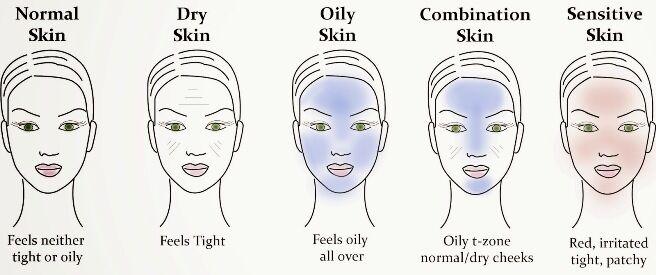Imagine a world where every day is a smooth skin day. No more fussing with razors, wrestling with waxing strips, or enduring the endless cycle of prickly regrowth. Sounds like paradise, doesn’t it? Welcome to the age of advanced hair removal technology, where the quest for silky, long-lasting smoothness often leads us to a crossroads: Laser Hair Removal or Electrolysis. Both promise to sweep away unwanted hair, but which path should you take? Join us as we navigate the intriguing landscape of these two popular treatments, uncovering the secrets behind their silky allure. Whether you’re a first-timer or a hair-free aficionado, our friendly guide will help you make the smoothest choice for your unique journey.
Understanding the Basics: Laser Hair Removal and Electrolysis Explored
When considering laser hair removal, it’s essential to understand how this popular method works. **Laser hair removal** utilizes concentrated light beams to target hair follicles. The pigment in the follicles absorbs the light, which destroys the hair. It’s highly effective for those with dark hair and lighter skin, but advances in technology are making it more versatile for various skin types and hair colors. **Key benefits** include faster sessions and the ability to cover larger areas, making it popular for commonly treated areas like legs, underarms, and the bikini line.
On the other hand, **electrolysis** is the go-to method for those seeking permanent hair removal, regardless of hair or skin type. This technique involves inserting a fine probe into the hair follicle and applying an electric current to destroy the follicle. Unlike laser treatments, which may offer long-term hair reduction, electrolysis can target and permanently remove nearly any hair color and texture. **Pros of electrolysis** include versatility and the potential for permanent results, making it suitable for areas like the face, where precision is key.
Here’s a quick comparison to help you decide which method might work best for you:
| Feature | Laser Hair Removal | Electrolysis |
|---|---|---|
| Method | Laser light | Electric current |
| Suitable for | Most skin types, best for dark hair | All hair and skin types |
| Effect | Long-term reduction | Permanent removal |
| Duration | Quick sessions | Longer sessions |
| Pain Level | Moderate | Varies (can be more intense) |
Choosing between the two largely depends on your specific needs and preferences. For those seeking a quicker process suited to larger areas, laser hair removal may be ideal. However, if you’re targeting smaller, precise areas or have lighter hair, electrolysis could be more effective in achieving your desired results. Always consult with a certified specialist to discuss your options and customize a treatment plan tailored to your unique situation.

The Science Behind Smooth Skin: How Each Method Works
When it comes to achieving that silky smooth skin, understanding how different hair removal methods work is crucial. Let’s delve into the specifics of **laser hair removal** and **electrolysis**, two popular choices that offer long-lasting results but operate quite differently under the skin.
Laser Hair Removal employs a concentrated beam of light aimed at the hair follicles. The pigment in the follicles absorbs the light, which then transforms it into heat, effectively destroying the hair follicle. This method is ideal for treating larger areas such as the legs or back quickly due to its ability to target multiple hair follicles simultaneously. Laser hair removal typically works best for individuals with lighter skin and darker hair because the contrast between the skin and hair pigment makes it easier for the laser to zero in on the follicles.
Electrolysis takes a different approach by targeting hair follicles individually. A very fine probe is inserted into the hair follicle, and an electric current is delivered to destroy the follicle at its root. This method is effective for individuals of all skin and hair types and is often used for smaller areas where precision is key, such as the eyebrows or upper lip. Because each hair follicle is treated one by one, the process can be time-consuming, but it offers a permanent solution to unwanted hair growth.
To help you better understand how these methods compare, here is a quick overview:
| Aspect | Laser Hair Removal | Electrolysis |
|---|---|---|
| Method | Laser light absorption | Electric current |
| Treatment Area | Larger (legs, back) | Smaller (eyebrows, upper lip) |
| Suitability | Best for light skin, dark hair | All skin and hair types |
Both methods have their own set of **advantages** and **considerations**, thus making the choice largely dependent on personal needs and the specific areas being treated. Whether you opt for the swift efficacy of laser hair removal or the precise permanence of electrolysis, having a clear understanding of how each method works will assist you in making a **smooth choice** for your skin.

Pain, Cost, and Time: Breaking Down the Investment
When it comes to **laser hair removal**, pain can feel like a fleeting, warm snap, often described as tolerable and quick. The technology targets multiple hair follicles simultaneously, making each session relatively short and sweet. Depending on your pain tolerance, you may leave the clinic feeling like you’ve had nothing more than a sunny day at the beach—minus the tan!
On the flip side, **electrolysis** dives deeper into each hair follicle, resulting in a sensation often compared to a tiny, static shock. It’s worth noting that each hair is individually zapped, requiring more time and patience. While it can feel more intense and prolonged, the pain level is manageable with the help of topical anesthetics.
| Aspect | Laser Hair Removal | Electrolysis |
|---|---|---|
| Pain | Quick, warm snap | Tiny, static shock |
| Session Time | 10-30 minutes | 15-60 minutes |
**Cost-wise**, laser hair removal often requires multiple sessions to achieve the desired results. Although the upfront cost can be high—each session ranging from $100 to $500—the long-term benefits make it an attractive option. Comparatively, the expense for electrolysis tends to be a bit of a marathon rather than a sprint. Individual sessions may appear cheaper, starting at around $30 to $100 each, but the cumulative cost can add up, especially for larger areas.
Both methods demand a time investment, but in different ways. Laser treatments are generally faster per session, covering more ground in less time—think 10 to 30 minutes depending on the area. Conversely, electrolysis can take 15 to 60 minutes, with each hair being individually targeted for permanent removal. While the commitment level is substantial for both, it’s all about balancing your personal pain tolerance, budget, and how much time you can spare from your bustling schedule.

Skin Types and Hair Colors: Finding Your Perfect Match
Identifying your skin type and hair color can be the key to choosing the most effective hair removal method for you. **Laser hair removal** and **electrolysis** each have their strengths and considerations based on these personal attributes.
| Skin Type | Hair Color | Preferred Method |
|---|---|---|
| Fair | Dark | Laser Hair Removal |
| Medium | Light | Electrolysis |
| Olive | Dark | Laser Hair Removal |
| Dark | Black | Electrolysis |
**Laser hair removal** is generally most effective for individuals with **lighter skin and darker hair**. This method uses laser light to target the pigment in the hair follicle, making dark hair on light skin the ideal combination. For those with fair skin, the contrast between the skin and hair color allows the laser to focus on the hair without causing skin irritation. However, those with light hair or darker skin tones might need to explore alternative options.
**Electrolysis**, on the other hand, can be extremely effective for individuals with any skin tone and hair color. This method works by inserting a tiny probe into the hair follicle and delivering an electric current to destroy the root. Because it doesn’t rely on the contrast between skin and hair color, it is an excellent choice for those with **blonde, gray, or red hair** that might not respond well to laser treatments.
Consider these attributes:
– **Fair Skin with Dark Hair**: Laser hair removal shines here, offering quick and effective results.
– **Light or Fine Hair**: Electrolysis is your best bet since it doesn’t rely on pigment.
– **Olive to Dark Skin Tones**: Electrolysis might be safer to avoid pigmentation issues.
– **Sensitive Skin**: Test each method first to see which is better tolerated.

Expert Tips: Preparing for Your Hair Removal Journey
Embarking on a hair removal journey can be both exciting and nerve-wracking. No matter which method you choose—whether it’s laser hair removal or electrolysis—proper preparation is key to a successful experience. Here are some expert tips to help you navigate your way to smoother skin.
Consult with a Professional
- **Schedule a consultation**: Before committing to a hair removal method, book a consultation with a certified specialist to discuss your goals, medical history, and skin type.
- **Ask the right questions**: Inquire about the technologies used, potential side effects, and the number of sessions required to achieve your desired results.
- **Patch test**: Request a patch test to see how your skin reacts to the treatment, especially if you have sensitive skin or a history of allergic reactions.
Pre-Treatment Preparation
- **Avoid sun exposure**: At least two weeks before your first session, avoid tanning beds, sunbathing, and self-tanning products to minimize skin sensitivity.
- **Pause hair removal routines**: Stop waxing, tweezing, and using depilatory creams at least six weeks prior to your session to ensure the root remains intact.
- **Shave**: Shaving the area 24-48 hours before your appointment helps the laser or electrolysis device better target the hair follicles.
Comparison Table: Laser Hair Removal vs Electrolysis
| Aspect | Laser Hair Removal | Electrolysis |
|---|---|---|
| Ideal for | Large areas, darker hair | All hair types and colors |
| Sessions Required | 6-8 sessions | 15-30 sessions |
| Duration | 1-2 hrs per session | 15 min – 1 hr per session |
| Results | Long-term, semi-permanent | Permanent |
Post-Treatment Care
- **Cool compresses**: Use cool compresses or aloe vera gel to soothe any redness or irritation post-treatment.
- **Moisturize**: Keep the treated area hydrated with a gentle, fragrance-free moisturizer.
- **Avoid heat**: Steer clear of hot baths, saunas, and rigorous exercise for at least 48 hours following your session.
Q&A
Q&A: Smooth Choices: Laser Hair Removal vs Electrolysis
Q: What a dilemma! How do I choose between laser hair removal and electrolysis?
A: Great question! Think of it like choosing between two amazing desserts. Both are sweet solutions for long-term hair removal, but they each have their own flavor. Laser hair removal is like a fancy sorbet—quick, efficient, and ideal for larger areas with dark hair. Electrolysis, on the other hand, is more like a rich, decadent chocolate mousse—meticulous, time-consuming, but oh-so-worth-it for any type or color of hair.
Q: Okay, but let’s break it down. What’s the key difference between these two treatments?
A: Picture this: Laser hair removal is like a spotlight that beams down on the problem, targeting your hair’s pigment with precision to zap it away. Electrolysis is more like a sniper, taking aim at individual hair follicles, one by one, to completely destroy them. Essentially, laser uses a broad approach with light, while electrolysis goes follicle-by-follicle with an electric current.
Q: Is one faster than the other? My schedule is tighter than skinny jeans after pizza night!
A: If you’re racing against time, laser hair removal is your fast lane. Sessions can be as quick as a coffee break, especially for larger areas like legs or back. Electrolysis, though, is more like a leisurely brunch. Each hair follicle requires its moment of fame under the needle, so it can take several sessions to cover a larger area.
Q: I’m a bit of a wimp when it comes to pain. Which option is more bearable?
A: Pain perception is like personal music taste—totally subjective. Laser hair removal feels like a rubber band snapping against your skin, which most folks find tolerable. Electrolysis can feel like tiny pinpricks, and since it’s more gradual, some say the discomfort is manageable. However, both procedures can offer numbing creams, so you can avoid feeling like a pincushion.
Q: How about results? I want to be smooth as silk; how soon can I expect to see that?
A: For the eager beavers out there, laser hair removal shows results after just a few sessions, but keep in mind you’ll need maintenance treatments over time. Electrolysis might take longer to show full results, but it holds the advantage of being FDA-approved for permanent hair removal. In the long run, electrolysis wins the marathon, while laser hair removal is more of a quick sprint.
Q: My wallet’s not exactly bursting with cash. Which one is easier on the budget?
A: Ah, the million-dollar question! Well, neither treatment is exactly a bargain bin find. Laser hair removal might seem pricier upfront per session, but since you might need fewer sessions compared to electrolysis, it can balance out. Electrolysis, being a lengthier process, could add up over time. It’s like comparing a bulk buy to weekly shopping trips—both have their costs, but it depends on how you spread them out.
Q: Any side effects I should worry about? I don’t want any nasty surprises.
A: Both treatments are generally safe when performed by professionals—you won’t find any horror movie scenarios here! Laser hair removal can cause temporary redness, swelling, or mild discomfort. Electrolysis may also lead to redness or slight swelling, and potentially small scabs. Following aftercare instructions is key to keeping your skin happy and smooth.
Q: I feel more informed, but how do I make the final call?
A: Take a moment to ponder your priorities—speed, budget, skin type, and hair color all play their parts. If you’re looking for quick results for larger areas and have darker hair, laser might be your star. For those seeking permanent solutions across the board, electrolysis is your hero. Consult with a certified professional who can guide you based on your specific needs. Remember, both choices lead to a smoother, more confident you. Ready to say goodbye to razors and hello to silky skin? Smooth sailing ahead!
In Retrospect
As we draw the curtain on our adventure through the world of smooth choices, it’s clear that both laser hair removal and electrolysis have their own dazzling strengths, waiting to work their magic on your unique skin. Whether you’re mesmerized by the swift efficiency of lasers or charmed by the meticulous precision of electrolysis, your journey to silky, hair-free skin is guided by your personal needs and preferences.
Imagine yourself striding confidently into each new day, your skin smooth as silk, reflecting your radiant self-assurance. Both paths lead to the same destination: a more confident you.
So, take a moment, breathe in that invigorating sense of possibility, and make the choice that feels right for your journey. After all, the best beauty decisions start with a sprinkle of knowledge and a dash of intuition. Here’s to making those smooth choices—and flaunting every bit of the fabulous skin you’re in!
Until next time, keep shining, stay smooth, and embrace every adventure with a glowing smile.





